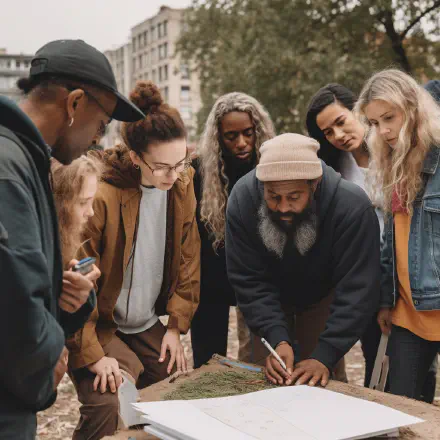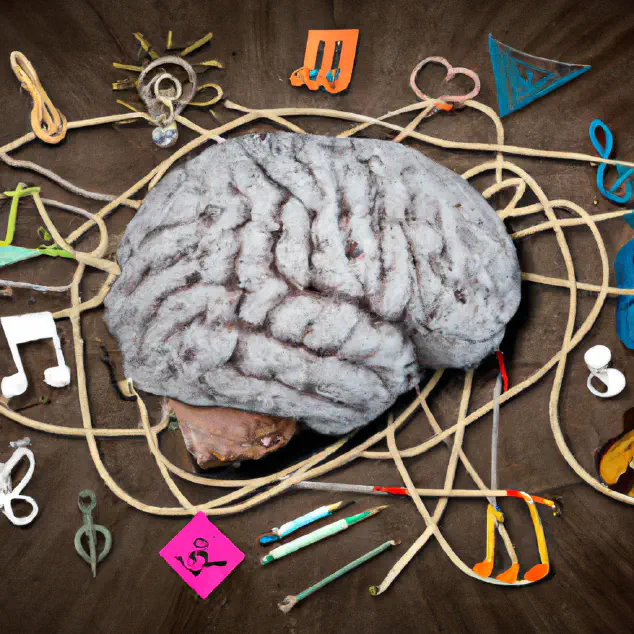
Introduction
Welcome to The Ultimate Guide to Gaining Knowledge, your roadmap to becoming a lifelong learner. In today’s fast-changing world, the importance of constantly improving your knowledge and skills cannot be overstated. Lifelong learning is necessary for personal growth, career advancement, and staying ahead of the curve in your area of expertise.
There are numerous benefits to gaining knowledge and skills throughout your life. It increases your confidence, improves your decision-making abilities, and helps you adapt to changes. By actively seeking new knowledge, you open yourself up to new opportunities and experiences that enrich your life.
In this guide, we will provide you with the tools and resources to help you embark on your journey to becoming a lifelong learner. Whether you are a student, a professional, or someone who simply wants to expand their horizons, this guide is for you. So, let’s get started!
Step 1: Identify your goals
Before embarking on your journey to gain knowledge, it is crucial to identify your goals. This will help you create a clear path towards achieving your objectives and make the learning process more efficient. Here are some key points to consider during this step:
-
Why is it important to set goals?
Setting goals helps you to focus your energy and resources towards achieving specific outcomes. It provides a clear target to aim for and helps to track your progress along the way. Without clear goals, it is easy to get sidetracked and lose sight of what you are trying to achieve.
-
How to identify your goals
Start by asking yourself what you want to achieve from gaining knowledge. Is it to improve your job prospects, enhance your personal growth, or gain a deeper understanding of a particular topic? Once you have identified your overall goal, break it down into smaller, more specific objectives that can be easily measured and tracked.
-
Examples of effective goal setting
- “I want to learn a new language and achieve conversational fluency within six months.”
- “I want to improve my public speaking skills and give a well-received presentation to my colleagues by the end of the quarter.”
- “I want to deepen my understanding of environmental issues and complete an online course on sustainable development within six weeks.”
Remember, it is important to set realistic goals that match your abilities and schedule. Setting unattainable goals can lead to frustration and burnout, so be sure to choose objectives that challenge you but are achievable with effort and dedication.
Step 2: Choose your learning style
Learning styles refer to the preferred method by which a person learns new information. By identifying your preferred learning style, you can customize your learning experience to one that suits you best. Here are some subtopics to consider under this step:
-
Overview of learning styles
Learning styles are generally classified into three categories: visual, auditory, and kinesthetic. Visual learners prefer information presented in images, graphs, or charts. Auditory learners learn best through sounds, music, or speech. Kinesthetic learners learn by doing, and prefer hands-on experiences.
-
How to choose the right learning style
To find out which learning style suits you, take an online quiz or self-assessment test. These tests are designed to identify your preferred learning style and recommend strategies for studying that are compatible with your style.
-
Examples of different learning styles
Here are some examples of how different learning styles can be applied in real-life situations:
- Visual learners could benefit from creating mind maps, diagrams, or sketches to illustrate information.
- Auditory learners could listen to lectures or music to help them remember information or attend class or study groups to ask questions and discuss subject material.
- Kinesthetic learners could use manipulatives or models to learn about complex concepts, perform hands-on experiments or get involved in practical activities.
Once you have identified your preferred learning style, you can choose study techniques and resources that are most effective for you.
Step 3: Create a plan
Creating a plan is crucial in achieving your learning goals. Without a plan, it’s easy to lose focus and direction. Here are some steps you can follow in creating an effective learning plan:
-
Define your objectives. Be specific and clear on what you want to achieve. Write down your goals and make sure they are SMART (specific, measurable, achievable, relevant, and time-bound).
-
Break it down into smaller chunks. Divide your learning objectives into manageable tasks or milestones. This will help you avoid feeling overwhelmed and make learning more achievable.
-
Create a timeline. Set deadlines for each milestone to keep yourself accountable and motivated. Make sure to have a realistic timeline that considers your available time and resources.
-
Identify the resources you need. Determine the materials and tools you need to achieve your learning objectives. This could include online courses, textbooks, software, or tools that will help you practice or apply what you’ve learned.
-
Select your methods. Decide on the learning methods that work best for you. This could include self-study, attending courses, mentorship, or networking. Choose methods that align with your learning style, schedule, and budget.
-
Stick to the plan. Be disciplined and committed to following your learning plan. If possible, track your progress regularly to stay on track and keep yourself motivated.
Remember, creating a learning plan is just the first step. Don’t be afraid to adjust and adapt your plan based on your progress, challenges, and feedback. A well-designed plan will guide you towards your learning goals, but it’s up to you to put in the effort and stay committed to your journey.
Step 4: Find resources
Once you have a learning plan in place, the next step is to find resources that will help you achieve your goals.
Where to find resources
There are many resources available that can help you gain knowledge in your chosen area. Here are just a few:
-
Books: Whether physical or digital, books remain one of the best resources for learning. Look for books that cover your topic in depth or provide practical advice and strategies.
-
Online courses: Online courses are a convenient way to learn at your own pace and from the comfort of your own home. Check out sites like Coursera, Udemy, or edX for a wide range of offerings.
-
Webinars and podcasts: Many experts now offer webinars and podcasts that cover a variety of topics. These can be a great way to learn from the best without having to leave your house.
-
Conferences and workshops: Attending conferences and workshops in person can be a valuable way to gain knowledge and network with others in your field.
How to choose the right resources
With so many resources available, it can be overwhelming to choose the right ones for your needs. Here are some tips to help you choose:
-
Look for resources that align with your learning style and goals. If you learn best through visual aids, for example, a book with lots of diagrams and illustrations might be a good fit.
-
Check out reviews and recommendations from others who have already used the resource. These can provide valuable insights into whether it will be effective for you.
-
Consider the credentials of the author or creator of the resource. Do they have expertise in the area you’re trying to learn about?
Examples of helpful resources
Here are some popular resources that you might find helpful:
-
TED Talks: TED Talks cover a wide range of topics and are delivered by experts in their fields.
-
Khan Academy: Khan Academy offers free online courses in math, science, and other subjects.
-
LinkedIn Learning: Formerly known as Lynda.com, LinkedIn Learning offers courses in a wide range of topics, from software development to leadership.
-
Coursera: Coursera partners with top universities to offer online courses in subjects like business, computer science, and more.
Remember, the key to finding the right resources is to choose those that align with your learning style and goals. Don’t be afraid to experiment with different resources until you find the ones that work best for you.
Step 5: Implement your plan
Congratulations! You’ve made it this far and are ready to put your plan into action. Implementing your plan can be challenging, but following these tips will help you stay on track and achieve your goals.
Tips for staying on track
- Set a schedule: Determine a regular schedule for studying and stick to it, treating it as a commitment to yourself.
- Focus on one task at a time: Don’t overwhelm yourself by trying to tackle too many tasks at once. Prioritize the most important task and work on that first.
- Take breaks: Studies have shown that taking breaks can increase productivity and help you stay focused. Set a timer for a 10-minute break after an hour of work.
- Hold yourself accountable: Share your goals with someone else (a friend, a mentor, or an accountability partner) and check in with them regularly on your progress.
- Celebrate successes: When you accomplish a task or achieve a goal, take a moment to celebrate your success. This will help motivate you to continue working towards your ultimate goal.
Strategies for overcoming obstacles
- Adapt to change: Be flexible and willing to adjust your plan as needed. Life is unpredictable, so be willing to pivot when necessary.
- Seek support: Don’t wait until you’re struggling to ask for help. Reach out to your accountability partner, a mentor, or seek professional help if needed.
- Eliminate distractions: Identify what distracts you during your study sessions and take steps to eliminate those distractions. This could mean turning off your phone, working in a quiet location or using an app to block social media sites during study sessions.
- Be patient: Remember that gaining knowledge takes time. Don’t get discouraged if you don’t see progress immediately. Keep putting in the work and you will see results.
How to measure your progress
It’s important to track your progress to ensure you’re staying on track and making progress towards your goals. Here are some ways to measure progress:
- Create a log: Keep a record of the tasks you complete, the time spent studying, and the goals you’ve achieved. This will help you recognize patterns and see your progress more clearly.
- Use metrics: If your goal is to learn a skill, set specific metrics to track your progress. For example, if you’re learning a new language, track the number of words learned or your ability to hold a conversation.
- Conduct self-assessments: Periodically assess your progress by comparing your current knowledge and skills to where you started. Ask yourself questions like, “What can I do now that I couldn’t do before?” or “What knowledge have I gained?”
By following these tips, overcoming obstacles, and tracking your progress, you’ll be well on your way to achieving your goals and gaining knowledge for life. Keep up the hard work and celebrate your successes along the way!
Conclusion
In conclusion, The Ultimate Guide to Gaining Knowledge has provided you with the tools and knowledge you need to unlock the door to infinite learning.
Throughout this guide, we have emphasized the importance of setting goals, choosing the right learning style, creating a plan, finding resources, and implementing your plan. By following these steps, you can become a lifelong learner and gain knowledge beyond your wildest dreams.
Remember, gaining knowledge is not an easy task, and obstacles may arise along the way. However, with the tips and strategies provided in this guide, you can overcome any challenge and stay on track towards achieving your goals.
In summary, never stop learning, and always seek new knowledge. With the right mindset and the right tools, anything is possible. So why wait? Start your journey to lifelong learning today and unlock the endless possibilities that come with gaining knowledge. As Albert Einstein said, “Education is not the learning of facts, but the training of the mind to think.”



